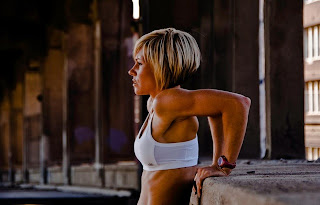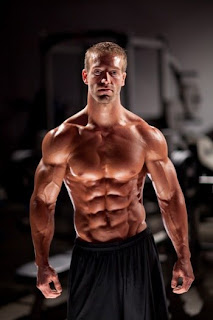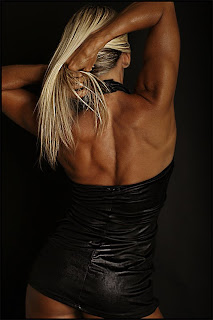
Continued: (Part 2 )(by FABRIZIO RINALDI - 48)
We saw an overview of the physiological deterioration due to aging, which are somewhat similar to the effects of remaining confined to bed, and therefore that the only way to contain these negative effects should be through regular physical activity. Now we will try to explore which might be the foundations of effective protocols to fight the aging process.
The principles and the rationale should be exactly the same for any kind of fitness protocol, regardless the age. I am not particularly favorable to the “just walking” programme, which are definitely better than being a couch potato, but are not particularly effective in fighting the negative effects of getting older.
When getting 40, which is when the physical decline becomes more evident, after three years of virtually no training, I decided to restart with a schedule combining aerobic activity and strength training, and the effects where rather impressive. In just 4 months I managed to lose 8 kg of fat, reducing blood pressure and lowering rest heart rate, and building muscle mass. At 47 I decided to start practicing triathlon. What is really intriguing about triathlon is that is correctly considered as the epitome of endurance sports but, contrary to common belief, an effective training for all kinds of triathlons should involve significant strength training, and even the aerobic sessions are not just based on long low intensity programs, which is what most people would expect from an endurance sport.
Strength training, together with aerobic activity, in its various forms and methods, is the foundation of most sports, and it is interesting to notice that many principles of my triathlon training are common to Richard’s prescriptions for boxing, which is a completely different kind of sport, with high involvement of explosive movements and with short bouts of energy. This clearly demonstrates that the ingredients of the recipe for an effective training are very much similar; only doses will change, given the evident difference of the expected performance in the two sports.
Let’s consider just running out of triathlon, for sake of simplicity. When preparing long distance competitions (21k or even above), I devote only three workouts a week to running, and just one is structured on long distances. The other two workouts are quality training; one is based on repeats, short distances (from 400 mt to 1600 mt) repeated several times with little recovery time in between, at rather high speed; a typical high intensity interval training. The second workout is based on medium distances (usually 5 to 10 km) but at a constant relatively high speed, which implies pretty high heart rate. Only the third run workout is based on a long distance/slow pace training. The three workouts elicit different metabolic pathways and enhance different physiological qualities. The first workout improves the VO2 max, which is like increasing the size of our performance engine; the second workout enhances the lactate threshold, which could be defined as the actual percentage of that engine power which can be used continuously, whilst the third raises endurance and fat metabolism. This kind of structure, which is similarly applied to swimming and bike, is a clear demonstration of the point I am trying to make.
PART 3
Intensity and change of pace, together with variety, are essential components even when training for pure endurance sports.
But that is not the whole story; in a week I also try to have two sessions of strength training, whose principles are based on the Functional Cross Fitness approach, with almost nothing in common with bodybuilding. The main essential point of this approach is to treat the body as a unit, instead of a collection of body parts, which leads to increased efficiency and high level of fitness, in other words, the best way to counteract negative effects of getting older.
Cross fitness involves also a continuous change of training parameters; sometimes the workout can take just 5-7 minutes (but at very high intensity), and sometimes up to 25 minutes. In general there is little or no recovery time, and the combination of exercises is regularly modified.
Functionality is the other foundation of cross fitness, which implies development of the ability of the body to manage the unexpected; it means not to get specialized, since in many sport, and often in life, the fitness with broad, general and comprehensive physical abilities tend to give a significant advantage. Therefore there is a mix up of training of different sports, without forgetting the specificity of your sport and of the kind of expected performance. Functionality means also training through movements that find actual application in everyday’s life and in sports. For example there is no functional application of the leg extension, the biceps curl, the side raise or the seated hip abductors machine, and I have no idea of a sport where these movements are applied. As a consequence, machines are generally avoided, unless there is a very specific need.
Another related feature of this programming is integration; the programme should include a variety of exercises that work on various dimensions of fitness : flexibility, core, balance, endurance, stamina, strength and power.
For people who are careful readers of the Abfitt blog, these points should sound rather familiar. Personally I found several similarities with Richard’s H.I.G.T. structure, and this should not surprise, since martial arts are one of the typical class of sports where functionality is the main feature.
If you really want to be an athlete, even when getting older, then you have to improve ability in all physical tasks, training with the purpose of performing successfully at multiple, diverse, and unexpected physical challenges. The methodology is rather empirical, and measurement of performance is critical to verify in general the effectiveness of the training activity and, more specifically, the adaptations elicited by this programming.
Just in a simple sentence : TRAIN THE FUNCTION
Personally I believe that the best way of fighting aging, and consequentially to look younger, is to pursue the athletic performance, not the appearance; that would only be a pleasant consequential effect.
Now we can try to list a series of guidelines which I consider essential, although not exhaustive, for countering aging effects:
1. Engage in consistent and regular training. You might consider less frequent training, getting older, but must maintain an appropriate level of intensity.
2. Aerobics training must play a central role, but even to maintain a good level of aerobic capacity, do not limit aerobics to the slow pace/long time activity. Interval training must be an integral part of your programme. Medium distance and high intensity aerobics are another dimension of quality training not to be neglected. In other words, alternate biking, running, swimming and rowing at short, middle, and long distances, in order to develop ability in all different metabolic processes.
3. Don’t limit the activity to aerobics only, because it cannot compensate for muscular loss. Use strength-based exercises two- three times a week, where you challenge the muscles and joints and load the bones. Forget about insulation movements, and involve as many muscles as possible in any given exercise. Pull Ups, squats, push ups (in all varieties), dips, deadlifts, kettlebells exercises (swings, Turkish get up, snatches, clean and press), skip rope, plyometric jumps should be integral part of any strength training. Perform all exercises with full range of motion, maintaining high intensity and little to no rest. Use free weights.
4. Observe intensity, but wisely, checking regularly the reactions of your body through blood analysis, blood pressure monitoring, electrocardiograms and echo cardiograms, once the 40 mark is passed. Intensity for older athletes should not mean pushing to the limit; workouts must be adapted to personal capacity and scaling is not shameful, since a deterioration of physical performances is inevitable with ageing. In general terms intensity is not an absolute concept, but a parameter which requires to be adapted to personal capacity.
5. Insert some instability exercises; stabilizer muscles favour the athletic performance and reduce injury risks.
6. Variety is fundamental to any training programme. Only regular changes make training really effective and reduce the risk of injury, not to mention they will ward off boredom.
7. Mix up different sports.
8. Maintain an adequate number of stretching sessions.
9. Whenever you are preparing a schedule for your training, ask yourself if you are training the function, and measure the performance, not the size and look of your muscles. Measuring the performance should help understanding whether you are going in the right direction, without becoming obsessed by numbers.
10. Drink substantial quantities of plain water. You need around a liter for every 25 kg of body weight in order to maintain a decent hydration level. When training, this volume must be substantially increased. As a rule of thumb, when training hard don’t drink less than 4 liters of water a day.
11. Follow good and rational dietary habits. I started to follow the zone 18 months ago, but the diet recommendations you find in this blog are sensible, and are consistent with my previous diet.
12. Eat often. It helps in keeping a high metabolism.
13. Find situations for relaxing., Find the right balance between activity and constructive relaxation. Don’t forget that recovery is as important as training.
14. Listen to your body; it well tell you if your training and diet are appropriate.















